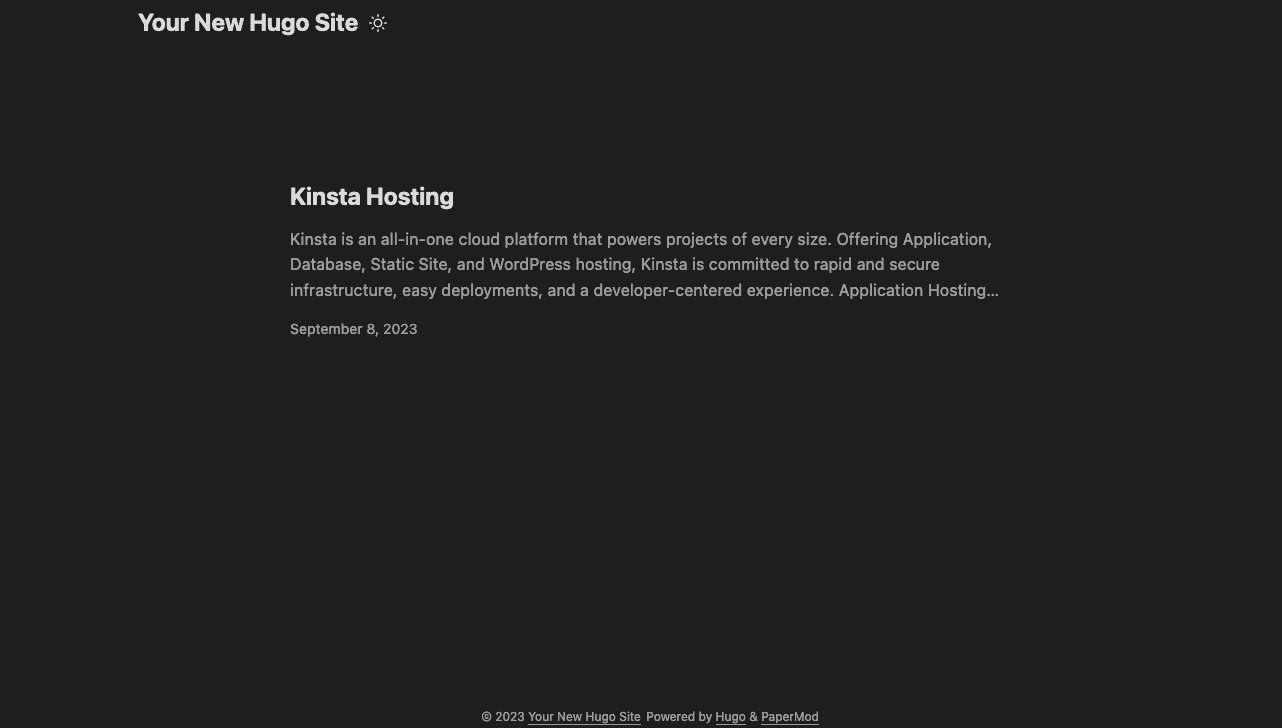Hugo
This is an example of how to set up a static site with Hugo on Kinsta’s Static Site Hosting services from a GitHub repository. Alternative methods, such as using CircleCI to deploy Hugo on Static Site Hosting, are also available.
Hugo is one of the fastest static site generators. It focuses on amazing speed and flexibility, and it’s built using GO. More information is available on the gohugo.io website.
You can also use this quick start template on Kinsta’s Application Hosting without any additional configuration. If you use Application Hosting, the Start command can be left blank for the web process as Kinsta automatically detects the required command during the first deployment.
Prerequisites
- Kinsta’s quick start templates are stored and managed in GitHub; therefore, you need a GitHub account to access them.
- You need to create a MyKinsta account to deploy the static site.
Deploy a Hugo static site
- Log in to GitHub and create a new repository from this template (Use this template > Create a new repository): Kinsta – Hello World – Static Site With Hugo.
- In MyKinsta, click Static Sites > Add site > select GitHub, click Connect git provider > Authorize, and log in to your GitHub account.
- Choose the Hello World Hugo repository, click Continue, and enter the following in the Build settings:
- Build command:
npm run build - Node version: 18
- Publish directory: public
- Build command:
During the deployment process, Kinsta automatically installs dependencies defined in your package.json file. The site is available as soon as the deployment finishes, and the PaperMod example page loads at your site’s URL.

Deployment lifecycle
Whenever a deployment is initiated (through creating a static site or re-deploying due to an incoming commit), the build command is run, followed by the deployment of the Publish Directory content.